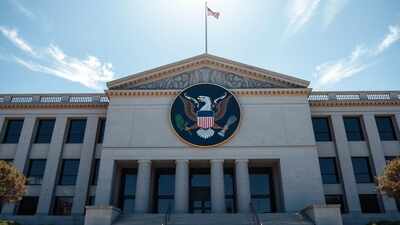
Across the United States, classrooms are looking emptier than they have in decades. Between fall 2019 and fall 2023, public school enrollment dropped from 50.8 million students to 49.5 million. That’s a staggering loss of more than 1.2 million children in just four years—a 2.5% decline.And this isn’t a temporary blip caused by COVID-19. According to the National Center for Education Statistics (NCES), enrollment is projected to fall below 47 million by 2031. As The 74 reports, this is one of the most significant shifts in the American education landscape in recent history.
Why is this happening?
The pandemic accelerated a trend that had already started in some communities. But the roots go deeper—straight into America’s demographic realities.First, the US birthrate has dropped to historic lows, sitting under 1.6 children per woman. This means fewer kindergartners are entering the system every year. Add to that immigration restrictions in recent years, which have curbed the arrival of new families and students.Then there’s domestic migration. Families are moving—often away from expensive coastal states to more affordable regions. High housing costs and taxes have pushed many to leave states like California and New York, redistributing students unevenly across the country.
The youngest grades are shrinking fastest
One of the most striking findings? The youngest learners are missing. Kindergarten enrollment alone fell nearly 6% between 2019 and 2023. Elementary schools saw a 4% drop, and middle schools plunged 6%, with sixth grade seeing the sharpest decline of 7%, according to The 74.Oddly enough, high school enrollment actually grew slightly—by about 2%. This suggests that while older students stayed in the system, younger cohorts are simply smaller, a trend that will echo through the education pipeline for years to come.
Racial and ethnic patterns: Who is leaving?
The decline isn’t equal across all student groups. White students experienced the most dramatic fall—nearly 2 million fewer, an 8% decline in just four years, and a 13% drop since 2014. Black student enrollment dipped by around 250,000 (3%).On the other hand, Hispanic and Asian enrollments are still growing, but at a much slower pace compared to the pre-pandemic years. These shifts are reshaping the cultural makeup of American classrooms, The 74 notes.
Where are the losses hitting hardest?
Geography tells its own story. Forty-one states lost students between 2019 and 2023. California saw the biggest numeric drop—325,000 students gone. West Virginia is on track for the steepest proportional decline, expected to hit 18%.Urban districts, which once thrived, are now bearing the brunt. Take Los Angeles Unified School District, where enrollment in high-poverty schools fell by as much as 15% post-pandemic, according to The 74.
The fallout: Funding cuts and school closures
Why does this matter so much? Because in the US, school funding is tied directly to enrollment. Fewer students mean less money—and that’s already forcing tough decisions.Districts are slashing arts programs, electives, and mental health services. Teachers are being laid off. In rural areas, entire schools are shutting down, leaving children with longer commutes and communities with fewer resources.
What happens next?
Experts say districts will have to get creative. That could mean sharing staff between schools, leasing out empty classrooms, or reimagining how schools operate entirely. Some districts are exploring partnerships with community organisations to keep buildings open and vibrant even as enrollment declines.But one thing is clear: this is more than just a numbers problem. It’s about equity, opportunity, and the future of public education in America. As The 74 warns, the ripple effects of today’s enrollment decline will shape schools—and communities—for decades to come.






